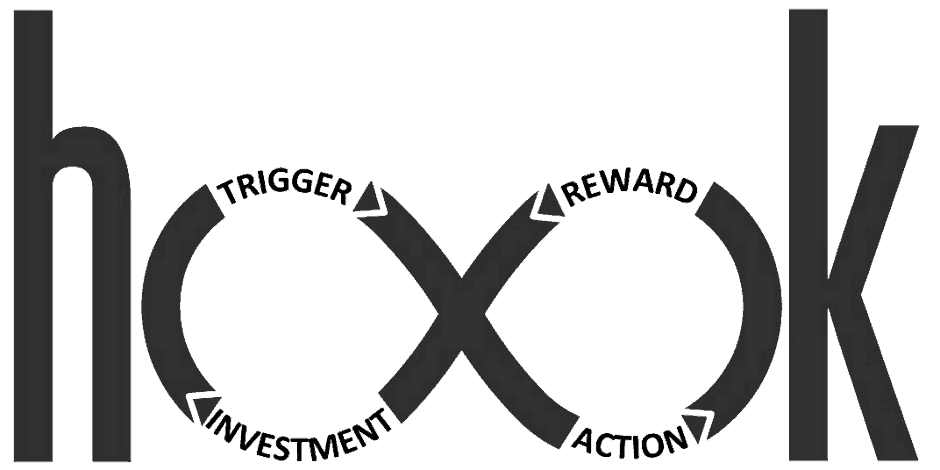
Slack isn’t just another office collaboration app. The company has been called, “the fastest-growing workplace software ever.” Recent press reports claim that “users send more than 25 million messages each week,” and that the company is, “adding $1 million to its annual billing projections every six weeks.”
Smelling an opportunity, investors just plowed $120 million into the company, giving it a $1.12 billion valuation.
“Our subscription revenue is growing about 8 percent monthly, before we add new sales,” says Slack’s business analytics lead Josh Pritchard. “This is, as far as I know, unheard for an enterprise SaaS company less than seven months after launch.”
Perhaps even more surprising, Slack’s user retention stands at an astonishing 93 percent.
How does Slack get its users hooked?
On the surface, no single factor seems to set Slack apart from a plethora of other online collaboration tools.
However, a closer look using the model described in the book Hooked: How to Build Habit-Forming Product, reveals the user psychology behind the company’s success.
A habit is an impulse to take an action automatically, with little or no conscious thought.
Slack’s ability to quickly form a habit could be the key to the company’s tremendous customer loyalty and high engagement.
Slack leads users repeatedly through a cycle called a “hook.”
The four steps of the hook include a trigger, action, reward, and investment, and through successive passes through these hooks, the new habit is formed.

The Hooked Model: Trigger, Action, Variable Reward & Investment
The Slack Habit
The Slack team understood that it is much easier to displace an existing habit than to create an entirely new one. Slack doesn’t try to radically change user behavior. Instead, it makes existing behaviors easier and more efficient.
Slack also meets one of the most important prerequisites required to form a new habit: the key behavior occurs frequently. The company says the average Slack user sends 40 messages a day.
Habituated users send twice as many.
Slack’s Triggers Are a Cue to Take Action
Users keep Slack open all day on a variety of devices and receiving a notification prompts opening Slack. Pritchard says, “It becomes a way of saying to your co-workers ‘I am at work and I am available.’”
The company has focused on making Slack easy to use when on the go. Slack user James Gill said, “I personally have found myself catching-up on things much more from my phone now than I ever did before.”
Though Slack clearly utilizes effective triggers in its own product to get users checking the app, don’t all those notifications overwhelm people? How can a company with the slogan, “Be less busy,” avoid perpetuating mindless multi-tasking with each new ping?
The key appears to be how Slack helps workers avoid other distractions.
Teams often use multiple tools in their work — Asana for project management, Github for version control, and Dropbox for files — all the while receiving notifications and reminders from those tools via email. However, all these messages and notifications can clutter a worker’s day, especially when they are received and processed in the same email inbox they use for all their other messages.
Combined with all the interoffice chatter we send back and forth through email and we soon find ourselves in the email deluge we swim in today.
Slack provides shelter from the storm.
By offering a centralized hub for team communications, including the information streaming in from work-related tools, professionals reduce distraction from the irrelevant messages bombarding their email inbox throughout the day. “Anything in Slack is internal,” says Slack user Jamie Lawrence. “Anything in my inbox should be external.”
Slack acts as a protective shield focusing user’s attention on what’s important by reducing irrelevant triggers.
Slack’s Action and Rewards
By focusing on only the triggers that matter and by making it easier for users to respond through any number of devices, Slack increases the likelihood of the user taking the key action — opening the app.
The next step in Slack’s hook is the reward…
Slack taps into team members’ need to feel included as well as their fear of missing out (FOMO) on important work-related information. Like any number of social media apps and sites, Slack provides variable rewards to its users in the form of new tidbits of information or approval from their peers, which arrive at unpredictable intervals.
Intermittent rewards are endemic to all sorts of habit-forming apps and products. In fact, Pritchard says the product reminds him of his former employer, “My time at Slack is definitely … reminiscent of early Facebook,” he says.
Investing in Slack
The final step of the hook is the investment…
Here, users put in a bit of work into the product to make it more useful and therefore increase the likelihood of using it in the future.
Users invest in Slack in multiple ways:
- inviting colleagues
- sending messages (which then become part of the searchable archive)
- adding integrations with external tools
- and of course, eventually paying for the service.
Slack understands the power of getting users to invest.
In fact, whereas most enterprise tools offer limited features during free trial periods, Slack holds almost nothing back.
The company wants to maximize usage and therefore opportunities to form the Slack habit. The only difference between Slack’s free and paid version is the quantity of messages that can be searched and the number of external tools which can be connected.
By the time companies need this functionality, their teams are already hooked.
Habit-forming apps make it as easy as possible for users to invest. Persuading users to pay, for example, is often a challenge for a previously free tool. However, Slack found a way to overcome some users objections to ponying-up. Pritchard said, “teams will not be charged for inactive users. This seems to significantly reduce the cognitive friction in the purchase process.”
Slack’s 30 percent conversion rate from free to paid customers is one of the highest in the enterprise business.
Slack makes the path from new to habituated user as smooth and as swift as possible. It effectively triggers checking the app, delivers immediate social and information rewards on an intermittent basis, and prompts users to invest by adding colleagues, content and eventually cash.
Nir’s note: This post was co-authored with Ciara Byrne, a technology journalist whose work has appeared in Fast Company, Forbes, VentureBeat and The New York Times Digital.
Photo Credit: Zuerichs Strassen
Related Articles
- Schedule Maker: a Google Sheet to Plan Your Week
- Cancel the New York Times? Good Luck Battling “Dark Patterns”
- How to Start a Career in Behavioral Design
- A Free Course on User Behavior
- User Investment: Make Your Users Do the Work
- Variable Rewards: Want To Hook Users? Drive Them Crazy
- The Hooked Model: How to Manufacture Desire in 4 Steps
